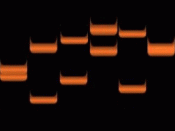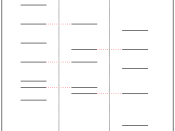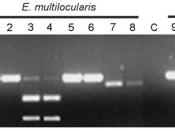Introduction
Large portions of any single person's DNA are the same as every other person's. Because we are all humans, a single piece of our DNA is dedicated to our species-specific traits, for example we have feet instead of hooves, skin instead of scales, etc. But other sections of human DNA are unique to the individual. These sections are called polymorphic because they vary in shape from person to person. In summary, DNA profiling is the process of separating an individual's unique sections of DNA from the common ones. This is used for forensic work on crime scenes, parentage testing, victim identification in mass disasters, animal identification and evolutionary studies.
How does DNA profiling work?
There are two processes of DNA profiling in common use. They are called restriction fragment length polymorphism (RFLP) and allele specific testing. They are similar in many ways, but they also have some differences.
RFLP is the process used to identify a person.
It requires a large sample of DNA (i.e. twenty-five or more hairs or a nickel-sized blood or semen stain). In criminal cases, DNA is often taken from tissues that are degraded or contaminated. Once the sample is extracted, it is mixed with a chemical called a restriction enzyme. The restriction enzyme cuts the DNA into fragments at specific points in the DNA sequence.
The next step is to sort the fragments, using a technique called electrophoresis. The fragments are put at the end of a long block of gel. Then the gel is zapped with several hundred volts of electrical current. The current causes the fragments to move towards the other end of the block of gel. The shorter fragments move farther and faster than the longer ones, so once the current has been shut off, the fragments have lined up according...


